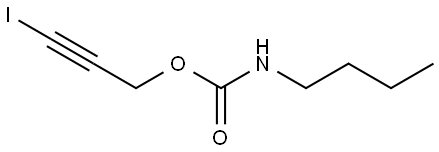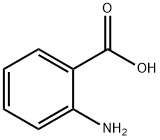Iodopropynyl butylcarbamate
- CAS NO.:55406-53-6
- Empirical Formula: C8H12INO2
- Molecular Weight: 281.09
- MDL number: MFCD00072438
- EINECS: 259-627-5
- SAFETY DATA SHEET (SDS)
- Update Date: 2024-12-18 14:15:30

What is Iodopropynyl butylcarbamate ?
Description
Iodopropynyl butylcarbamate is a preservative that has been used as an industrial fungicide since the 1970s and more recently has been combined with formaldehydereleasing agents for use in cosmetics. The North American Contact Dermatitis Group patch tested with 0.1%iodopropynyl butylcarbamate in petrolatum and found 0.2% of their patch test clinic patients had positive reactions to this chemical. Most cosmetic applications appear to require less than 0.012% of this preservative.
Chemical properties
Liquid
The Uses of Iodopropynyl butylcarbamate
iodopropynyl butylcarbamate is a preservative with broad fungicidal activity used in skin care products. It is recommended for use in difficult formulation systems.
The Uses of Iodopropynyl butylcarbamate
Glycacil(R) 2000 is used as a preservative in personal care formulations.
The Uses of Iodopropynyl butylcarbamate
Fungicide; mildewcide; preservative in cosmetics, paints and coatings, metal working fluids; wood protection.
Definition
ChEBI: A carbamate ester that is carbamic acid in which the nitrogen has been substituted by a butyl group and in which the hydrogen of the carboxy group is replaced by a 1-iodoprop-2-yn-3-yl group. A fungicide, it is used as a preservative and sapstain control c emical in wood products and as a preservative in adhesives, paints, latex paper coating, plastic, water-based inks, metal working fluids, textiles, and numerous consumer products.
General Description
Off-white solid.
Reactivity Profile
Iodopropynyl butylcarbamate is a carbamate ester. Carbamates are chemically similar to, but more reactive than amides. Like amides they form polymers such as polyurethane resins. Carbamates are incompatible with strong acids and bases, and especially incompatible with strong reducing agents such as hydrides. Flammable gaseous hydrogen is produced by the combination of active metals or nitrides with carbamates. Strongly oxidizing acids, peroxides, and hydroperoxides are incompatible with carbamates.
Flammability and Explosibility
Not classified
Contact allergens
Iodopropynyl butylcarbamate (IPBC) is a broad-spec- trum preservative used for years because of its wide field of application, in polymer emulsions and pigment dispersions such as water-based paints and adhesives, cements and inks, as a wood preservative, in metal- working fluids, household products, and cosmetics. Allergic contact dermatitis to IPBC was reported due to cosmetics, from sanitary wipes, and in metalworkers.
Contact allergens
Iodopropynyl butylcarbamate has produced slight irritation in rabbits. However, it was not found to be either a skin sensitizer or a photo sensitizer in guinea pigs. Cosmetic formulations containing up to 0.125% of iodopropynyl butylcarbamate produce no significant irritation or sensitization reactions in human repeated insult patch tests. Iodopropynyl butylcarbamate did not cause crosssensitization reactions in patients who had demonstrated sensitivity to related dithiocarbamate compounds. In the European Union, it is approved as a preservative up to 0.05% and is not to be used in oral hygiene or lip care products. If the concentration exceeds 0.02% in leave-on products, a warning label must indicate that the product contains iodine.
Clinical Use
Iodopropynyl butylcarbamate (3-iodo-2-propynyl-butylcarbamate) is a highly effective fungicide as well as a bactericide. It was first used in the 1970s as a film fungicide for paint and then as a wood preservative, where final use concentration up to 4% was permitted. For paint and coatings usually no more than 0.5% iodopropynyl butylcarbamate is used. For metalworking fluids, adhesives, textiles, and paper, concentrations between 0.1%and 0.2% are common. The Cosmetic Ingredient Review Expert Panel concluded that iodopropynyl butylcarbamate is safe as a cosmetic ingredient in concentrations less than or equal to 0.1%and that it should not be used in products intended to be aerosolized. By 1996, iodopropynyl butylcarbamate was used in 122 formulations reported to the United States Food and Drug Administration. Iodopropynyl butylcarbamate is found in a wide variety of occupational and consumer products, including shampoos, lotions, powders, makeup, baby products, paints, coatings, metalworking fluids, household products, cooling water, building materials, and contact lenses. It is an irritant, although at low concentrations few problems have been reported.
Properties of Iodopropynyl butylcarbamate
| Melting point: | 64-68 °C(lit.) |
| Boiling point: | 321.8±25.0 °C(Predicted) |
| Density | 1.606±0.06 g/cm3(Predicted) |
| vapor pressure | 0.005Pa at 25℃ |
| storage temp. | Keep in dark place,Sealed in dry,2-8°C |
| solubility | soluble in Methanol |
| form | neat |
| pka | 12.03±0.46(Predicted) |
| color | White to Almost white |
| Water Solubility | 168mg/L at 20℃ |
| Merck | 14,5069 |
| Stability: | Stable. Incompatible with strong oxidizing agents. |
| CAS DataBase Reference | 55406-53-6(CAS DataBase Reference) |
| EPA Substance Registry System | 3-Iodo-2-propynyl butylcarbamate (55406-53-6) |
Safety information for Iodopropynyl butylcarbamate
| Signal word | Danger |
| Pictogram(s) |
 Corrosion Corrosives GHS05  Skull and Crossbones Acute Toxicity GHS06  Health Hazard GHS08  Environment GHS09 |
| GHS Hazard Statements |
H302:Acute toxicity,oral H317:Sensitisation, Skin H318:Serious eye damage/eye irritation H331:Acute toxicity,inhalation H372:Specific target organ toxicity, repeated exposure H410:Hazardous to the aquatic environment, long-term hazard |
| Precautionary Statement Codes |
P273:Avoid release to the environment. P280:Wear protective gloves/protective clothing/eye protection/face protection. P314:Get medical advice/attention if you feel unwell. P301+P312:IF SWALLOWED: call a POISON CENTER or doctor/physician IF you feel unwell. P305+P351+P338:IF IN EYES: Rinse cautiously with water for several minutes. Remove contact lenses, if present and easy to do. Continuerinsing. |
Computed Descriptors for Iodopropynyl butylcarbamate
| InChIKey | WYVVKGNFXHOCQV-UHFFFAOYSA-N |
Iodopropynyl butylcarbamate manufacturer
Speciality Organics Pvt. Ltd.
Nutracare International
New Products
(S)-3-Aminobutanenitrile hydrochloride 4-Methylphenylacetic acid N-Boc-D-alaninol N-BOC-D/L-ALANINOL Tert-butyl bis(2-chloroethyl)carbamate 3-Morpholino-1-(4-nitrophenyl)-5,6-dihydropyridin- 2(1H)-one Furan-2,5-Dicarboxylic Acid Tropic acid 1-Bromo-3,5-Di-Tert-Butylbenzene S-2-CHLORO PROPIONIC ACID ETHYL ISOCYANOACETATE 2-Bromo-1,3-Bis(Dimethylamino)Trimethinium Hexafluorophosphate 4-IODO BENZOIC ACID 3-NITRO-2-METHYL ANILINE 1-(2,4-DICHLOROPHENYL) ETHANAMINE (2-Hydroxyphenyl)acetonitrile 4-Bromopyrazole 2-(Cyanocyclohexyl)acetic acid 4-methoxy-3,5-dinitropyridine 1-(4-(aminomethyl)benzyl)urea hydrochloride 2-aminopropyl benzoate hydrochloride diethyl 2-(2-((tertbutoxycarbonyl)amino) ethyl)malonate tert-butyl 4- (ureidomethyl)benzylcarbamate Ethyl-2-chloro((4-methoxyphenyl)hydrazono)acetateRelated products of tetrahydrofuran








You may like
-
 55406-53-6 98%View Details
55406-53-6 98%View Details
55406-53-6 -
 Iodocarb 98%View Details
Iodocarb 98%View Details
55406-53-6 -
 Iodopropynyl butylcarbamate 98% CAS 55406-53-6View Details
Iodopropynyl butylcarbamate 98% CAS 55406-53-6View Details
55406-53-6 -
 3-Iodo-2-propynyl N-Butylcarbamate CAS 55406-53-6View Details
3-Iodo-2-propynyl N-Butylcarbamate CAS 55406-53-6View Details
55406-53-6 -
 3-Iodo-2-propynyl N-butylcarbamate CASView Details
3-Iodo-2-propynyl N-butylcarbamate CASView Details -
 55406-53-6 Iodocarb 98%View Details
55406-53-6 Iodocarb 98%View Details
55406-53-6 -
 3-Iodo-2-propynyl N-butylcarbamate CAS 55406-53-6View Details
3-Iodo-2-propynyl N-butylcarbamate CAS 55406-53-6View Details
55406-53-6 -
 3-Iodo-2-propynyl N-butylcarbamate CAS 55406-53-6View Details
3-Iodo-2-propynyl N-butylcarbamate CAS 55406-53-6View Details
55406-53-6